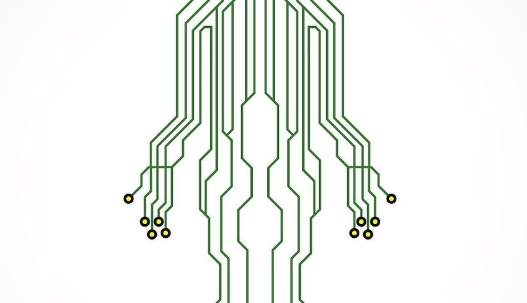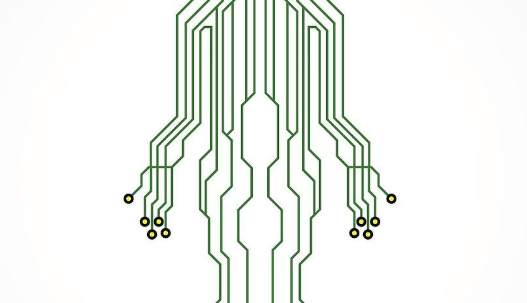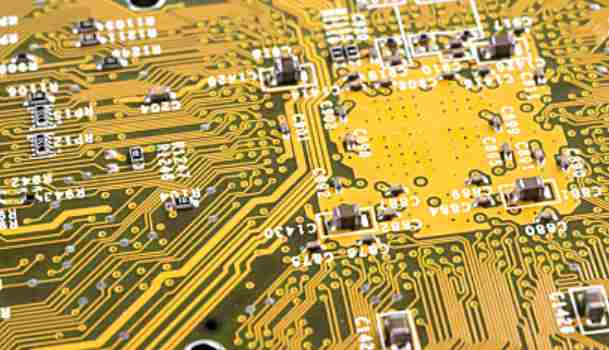
Compacted laminated structure design
The main factors considered in the design of laminated structure are the heat resistance, voltage resistance, filling amount and dielectric layer thickness of the material, which should follow the following main principles.
(1) Semi-cured sheet and core plate manufacturers must be consistent. In order to ensure PCB reliability, 1080 or 106 semi-cured sheets shall be avoided for all layers (except for special requirements of the customer). If the customer has no requirement of medium thickness, the thickness of medium between each layer shall be guaranteed to be ≥0.09mm according to IPC-A-600G.
(2) When the customer requires high TG plate, the core plate and semi-cured plate shall use the corresponding high TG material.
(3) Inner substrate 3OZ or above, select high resin content semi-cured tablets, such as 1080R/C65%, 1080HR/C 68%, 106R/C 73%, 106HR/C76%; But try to avoid all the use of 106 high-glue semi-cured sheet structure design, to prevent multiple pieces of 106 semi-cured sheet superimposed, because the glass fiber yarn is too thin, glass fiber yarn collapse in the large substrate area and affect the size of the chaos and burst plate stratification.
(4) If the customer does not have special requirements, the dielectric layer thickness tolerance between layers is generally controlled by +/-10%. For impedance plates, the dielectric thickness tolerance is controlled by IPC-4101 C/M class tolerance. If the impedance influence factor is related to the substrate thickness, the plate tolerance must also be controlled by IPC-4101 C/M class tolerance.

2.3 Interlayer alignment control
The precision of inner core board size compensation and production size control requires accurate compensation of each layer graphic size of high-rise board through the data and historical data experience collected during production in a certain period of time, to ensure the consistency of each layer core board growth and shrinkage. Select high precision, high reliability before pressing interlayer positioning methods, such as four slot positioning (Pin LAM), hot melt and rivet bonding. Setting the appropriate pressing process and daily maintenance of the press are the key points to ensure the pressing quality, control the merging glue and cooling effect, and reduce the dislocation between layers. The control of interlayer alignment degree should be considered from the compensation value of inner layer, the pressing positioning mode, the pressing process parameters, the material characteristics and other factors.
2.4 Inner circuit process
Because the resolution capacity of the traditional exposure machine is about 50μm, for the production of high-rise plate, can introduce laser direct imaging machine (LDI), improve the graphic resolution capacity, resolution capacity of about 20μm. The alignment accuracy of conventional exposure machine is ±25μm, and the alignment accuracy between layers is greater than 50μm. Using high precision alignment exposure machine, the graphics alignment accuracy can be improved to about 15μm, the interlayer alignment accuracy control within 30μm, reduce the alignment deviation of traditional equipment, improve the interlayer alignment accuracy of high layer board.
In order to improve the etching ability of the line, the need in the engineering design of the width of the line and the welding plate (or ring) to give appropriate compensation, also need to special graphics, such as circuit, independent line compensation amount to do more specific design considerations. Confirm whether the design compensation of inner line width, line distance, isolation ring size, independent line, hole to line interval is reasonable, otherwise modify the engineering design. Impedance, reactance design requirements pay attention to independent line, impedance line design compensation is enough, etch control parameters, the first confirmed qualified before mass production. In order to reduce etching side erosion, it is necessary to control the composition of each group of etching solution within the best range. Traditional etching line equipment etching ability is insufficient, can carry out technical transformation of the equipment or import high precision etching line equipment, improve the etching equalization, reduce etching rough edge, etching impurity and other problems.
2.5 Pressing process
At present, interlayer positioning methods before pressing mainly include: four-slot positioning (Pin LAM), hot melt, rivet, hot melt and rivet combination. Different product structures adopt different positioning methods. For the high level plate using four slot positioning mode (Pin LAM), or using fusion + riveting production, OPE punching machine out of the positioning hole, punching accuracy control in ±25μm. In order to prevent subsequent stratification, it is necessary to check whether each plate is fused into the unit during batch production. The pressing equipment adopts a high-function matching press to meet the interlayer alignment accuracy and reliability of the high-rise plate.
According to the laminated structure of the high-rise board and the materials used, study the appropriate pressing procedure, set the best temperature rise rate and curve, in the conventional multi-layer circuit board pressing procedure, properly reduce the pressing sheet material temperature rise rate, prolong the high temperature curing time, so that the resin fully active, curing, while avoiding the process of pressing skateboard, dislocation between layers and other problems. Material TG value is not the same as the plate, can not be with the grate plate; The plate with ordinary parameters can not be mixed with the plate with special parameters; The function of different plates and semi-cured sheets is different. The corresponding plate semi-cured sheet parameters should be used for pressing. The special materials that have never been used need to verify the process parameters.









